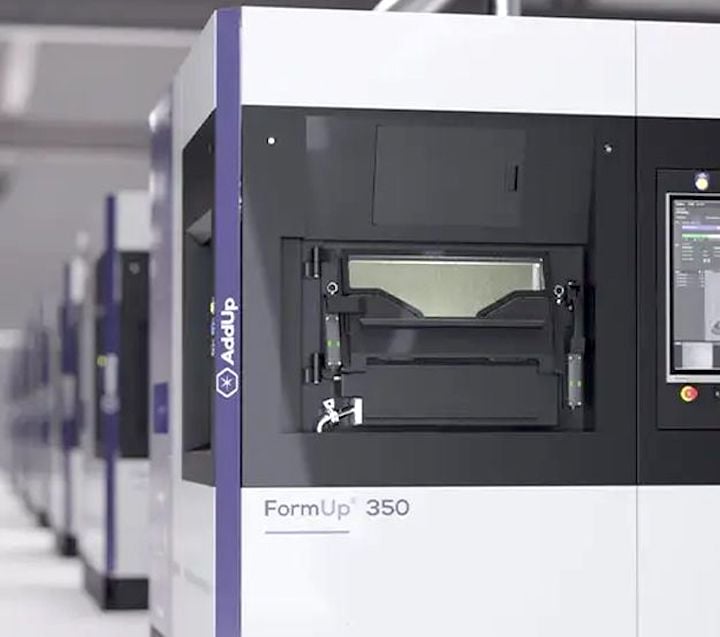
AddUp announced a joint venture, and it’s a very different way to engage with clients.
First, the news here. AddUp is a French company that produces high quality industrial metal 3D printing equipment. In 2019 they partnered with Sageclair, a French engineering company specializing in aerospace applications, to create PrintSky, a joint venture. The idea of this venture was to leverage additive manufacturing for aerospace applications.
Now they’ve announced that PrintSky has been selected by Collins Aerospace to help develop an advanced flight actuation design. They explain what this is about:
“An electromechanical actuation is a complex system integrating various components (sensors, engine, electronic cards, etc.) The structure of these actuation systems, designed and manufactured by PrintSky, is meant to ensure several functions: to resist mechanical loads, to dissipate the heat emitted by the components or to be tight and insensible to electromagnetic disturbances. Given the complexity and criticality of this structure, it is an interesting subject for additive manufacturing.”
They believe the 3D print technology from AddUp, combined with the design skills at PrintSky, should be able to create unique and more functional designs for this application.
But I think there’s a bit more to say about this development.
I see many different 3D printer manufacturers, and their common goal is to have more users operating their equipment, and thus make more sales. The difference is in how these 3D printer manufacturers pursue that goal.
The classic model is to simply make the machine and sell them to customers. Those customers then operate the machine and make their desired parts. That sounds like a simple model, but there’s several big problems. First, customers typically don’t know how to operate the equipment in an optimal manner; they just don’t have the experience yet. Secondly, they don’t necessarily have the design skills to develop the unique parts that truly leverage the technology.
This is why many 3D printer manufacturers offer comprehensive training programs and service offerings. But those can be expensive for both client and manufacturer.
Another approach that I’ve been seeing more of lately is a kind of “closed system”. The 3D printer manufacturer recognizes that customers don’t really know how to run things very well, so they don’t let them. Instead, the machines all exist at the 3D printer manufacturer’s location(s) and simply take requests from clients to make parts. That cuts out the need for field service and overcomes the operational problems.
But it doesn’t help much with the design problem.
AddUp’s approach here is to partner with a company that does know how to design for AM, and that unit interacts with the customers to provide both design and operations.
I believe this should be a very successful business strategy for AddUp, and other 3D printer manufacturers should also consider doing so. After all 3D printer manufacturers are great at building 3D printers, but they know a lot less about the applications used on the 3D printers.
